The enchanted land beyond the forest
The Carpathians of Romania, a last piece of wilderness in Europe
Pristine nature, ancient forests, picturesque villages: the Carpathians lie in the heart of Romania, a last piece of wilderness in the middle of Europe – a green treasure that must be protected.
The trees are shrouded in fog. The “ballerina of the mountains” is leading the way, her hood pulled low over her head. Simona Bordea moves smoothly between the rocks, as if she were floating. Nimble on her feet, she dodges puddles, leaps over roots and stones, and sashays towards the mountain ridge. Suddenly she stops dead in her tracks. “Can you tell who has walked along here ahead of us?” She bends down to a conspicuous heap. “Mushrooms were on its menu – and blueberries. A gourmet, that brown bear.” She laughs. “Maybe we can still find its paw prints in the mud.”
If you walk through Romania’s Fãgãraș Mountains in the southern Carpathians, you rarely meet a soul. Wild animals are always nearby though. Their tracks betray the presence of wolves, lynxes, wild boars and foxes. Around 5,000 brown bears roam the undergrowth, more than anywhere else in Europe. A child of the region, Simona Bordea works as a tourism manager and hiking guide for the Fundaţia Conservation Carpathia. She is passionate about taking people on a magical journey to one of Europe’s last wild spots.
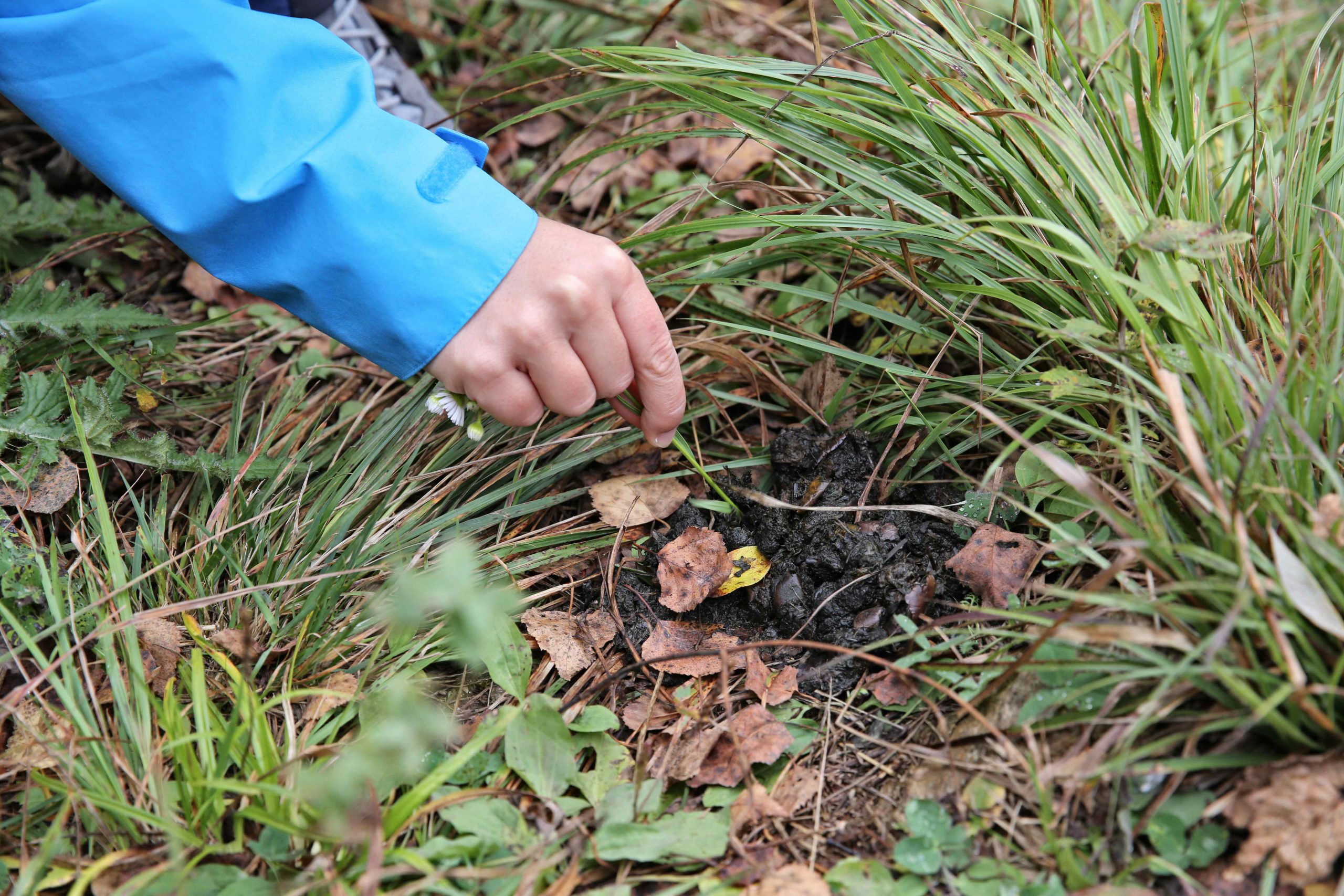
Around 5,000 brown bears roam the undergrowth in Transylvania, more than anywhere else in Europe. If you look carefully, you will find their tracks. But it is not always certain that you will see a bear too.
Whenever Simona Bordea, 34, told people where she came from during her many journeys to the US, Asia, or while pilgrimaging along the Way of St. James, everyone just joked about Count Dracula. Today, Bordea shows people from all corners of the world that her homeland has more to offer than bloodthirsty legends. Transylvania translates to “the land beyond the forest”: a roughly 100,000-square-kilometre stretch of land in the heart of Romania, between Hungary and the Black Sea. It is enclosed by the Carpathians, a 1,300-kilometre-long mountain range with ancient trees, home to the largest contiguous forest area in Europe. Two thirds of the continent’s remaining primeval forests grow here; there’s no settlement for kilometres around, no road cutting through nature. People like Bordea hope to promote green – ecological and sustainable – tourism to draw attention to the wonders of this wilderness. And to its fragility.
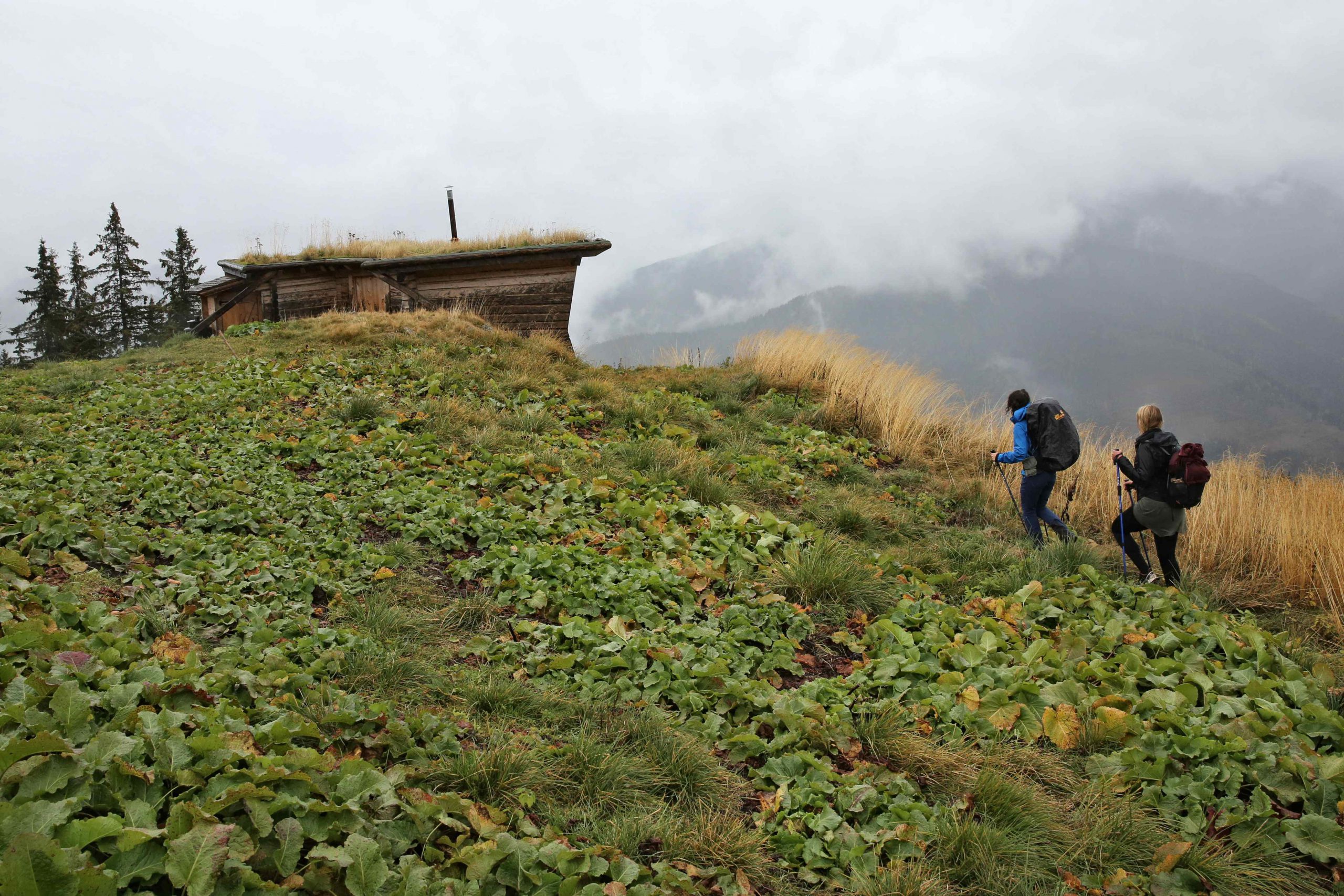
“The land beyond the forest” translates Transylvania. It is a roughly 100,000-square-kilometre stretch of land in the heart of Romania, between Hungary and the Black Sea.
We follow Simona Bordea along a narrow path. In a clearing, surrounded by forest, far from civilisation, stands the small cabin Bunea overlooking Lake Pecineagu, which disappears in the twilight. The full moon bathes the forest in silvery-milky light. In the mist the trees appear like black jags protruding from a white blanket. From a distance, we hear the muffled sound of red deer roaring. In the cabin Simona Bordea lights a fire and some candles. There is no electricity in the cabin, no mobile phone reception. Simona cuts smoked cheese and bread and pours some wine. The produce of farmers living in the nearby small villages – pickled vegetables, sausage, bread, blueberry jam – ends up on the plates of tourists who, from the cabins, observe what needs to be preserved: Romania’s natural world.
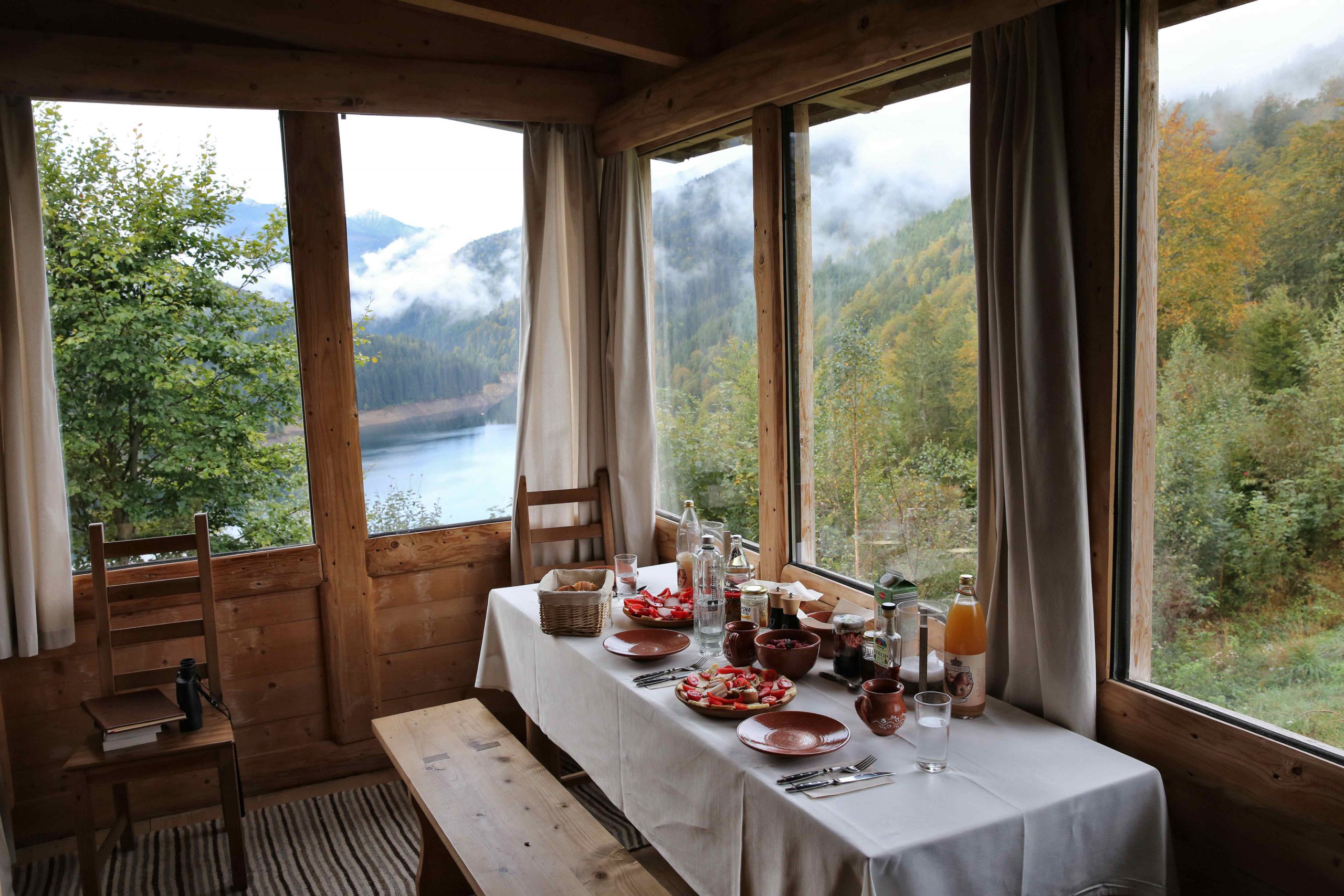
In a small and simple cabin the tourists get served for dinner what farmers of nearby small villages produce. Through green – ecological and sustainable – tourism, the locals hope to draw attention to the wonders of this wilderness. And to its fragility.
Guests who spent the nights in the cabin have left their records: bear sighted: “big boss”. Wolves. Foxes. A lynx. Each observation is neatly listed, including the time of day. Behind binoculars, we wait for something to stir. But everything remains quiet. “The wilderness does not guarantee bear sightings,” says Bordea. “We cannot promise you glimpses of an animal.”
The next morning we continue our journey through Simona Bordea’s “enchanted forest”, as she calls it, past the many ancient beeches. Many of the more than 400-year-old giants tower 40 metres in the air. “I’m awed when I think about all the things those trees have seen,” she says. “The forest, it grounds me, walking here is my meditation.” She stops at one of the trees. “Everything is connected,” she says. “Each branch, every little plant, every mushroom fulfils a function. The trees communicate with each other.” She takes a deep breath.
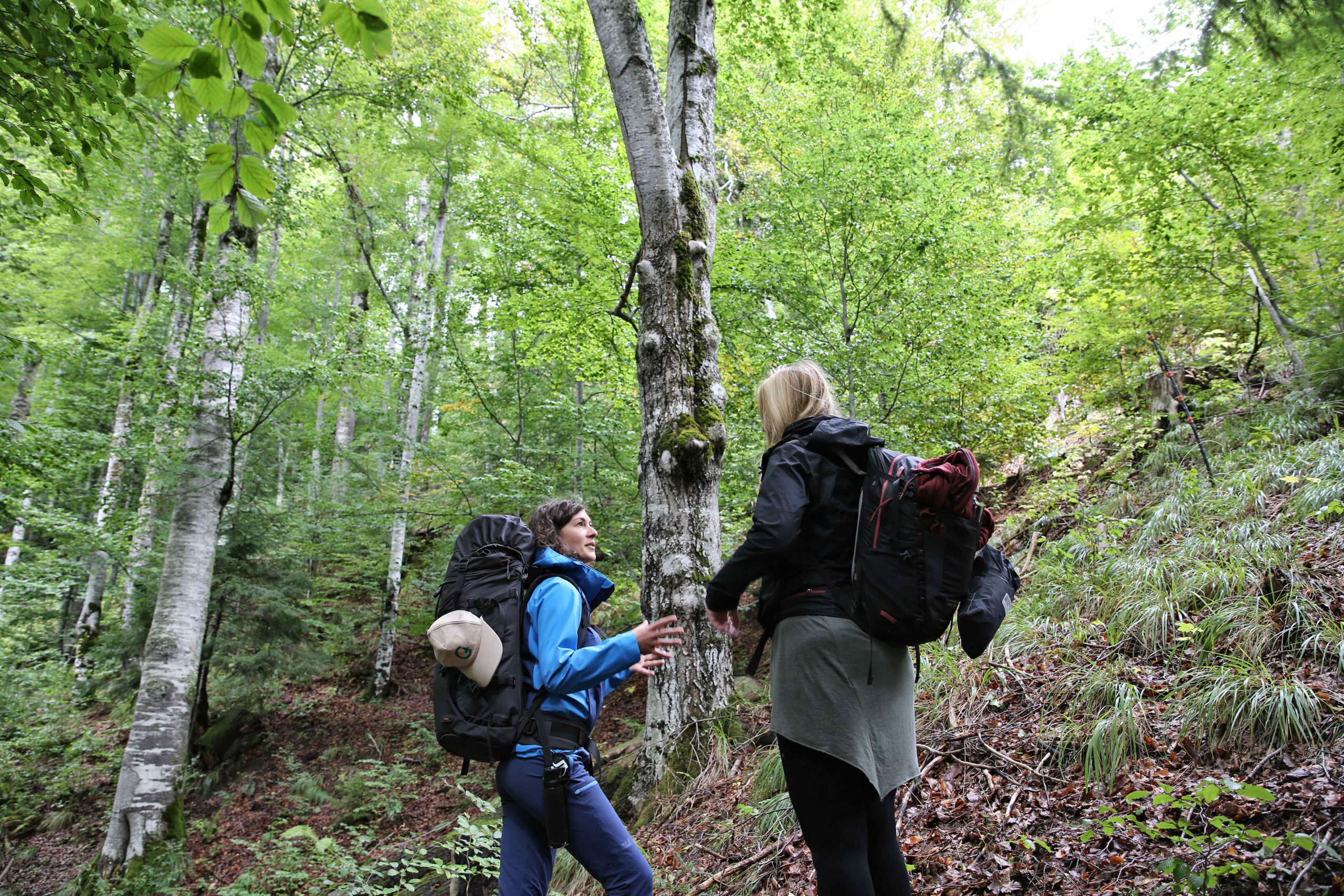
While beech forests once covered much of Europe, they have largely disappeared today. The Carpathians are the only place on the continent where such large areas of primeval forest have survived.
While beech forests once covered much of Europe, they have largely disappeared today. The Carpathians are the only place on the continent where such large areas of primeval forest have survived. In 2011, UNESCO designated the primeval beech forests as a natural World Heritage Site: so valuable that the countries on whose soil they grow share the responsibility to preserve them. But the treasure is being threatened, its destruction is progressing. In recent decades, Romania’s forests have been massively deforested. The demand for cheap wood is on the rise – also from Western Europe.
In his off-road vehicle, Mihai Zotta, the conservation director of the Foundation Conservation Carpathia, a colleague of Simona Bordea, speeds over the forest’s muddy tracks. He shows us where devastation has dug itself into the landscape. A tall man, his cap pulled low over his bald head, he gazes worriedly at the devastation – tree stumps swallowed by the mist as far as the eye can see. For timber companies, the sole purpose of forests is to provide boards, timber and furniture. “With their rotten cores, the ancient beech trees can hardly be processed though,” says Zotta. “They become firewood. The ecological value, however, is priceless. Many people don’t realise that our forest is the real treasure.”
When Romanian dictator Nicolae Ceaușescu was overthrown in 1989, the pseudo-communist system fell with him. More than 20,000 square kilometres of land that had previously belonged to the state was returned to private individuals. Many swiftly turned their land into money, Zotta tells us. Inside and outside protected areas, they sold the forest to Romanian logging companies or international investment funds. Satellite images, analysed by Greenpeace, reveal that the country loses around 280 square kilometres of forest per year, which roughly corresponds to the urban area of Munich. The Romanian timber mafia’s influence reaches to the highest levels of government, involving foresters and politicians, says FCC director Mihai Zotta. Both the Romanian anti-corruption authority and the anti-mafia authority are investigating. In February 2020, the European Commission launched an infringement procedure against Romania. Activists have been fighting this for years, often risking their lives. The WWF has partnered with Romanian environmental organisations and foundations to protect the forests. Zotta used to work as a logger in Germany. Today he is in charge of a large reforestation project and takes visitors to see small tree shoots. They have planted almost three million trees.
“Back to the source and let nature be nature” is the vision of wildlife biologists Christoph and Barbara Promberger, who pursue one of the most ambitious European nature conservation projects in the Carpathians. “We have a unique biological diversity here that hardly exists anymore,” says Christoph Promberger. “Romania may be one of the poorest countries in Europe, but in terms of biodiversity it’s one of the richest.” Originally as wolf researchers, he and his wife came to the Carpathians to research the behaviour of the packs – and fell in love with the rugged landscape, the endless meadows and forests, and with each other. Today, they run a horse farm in Transylvania.
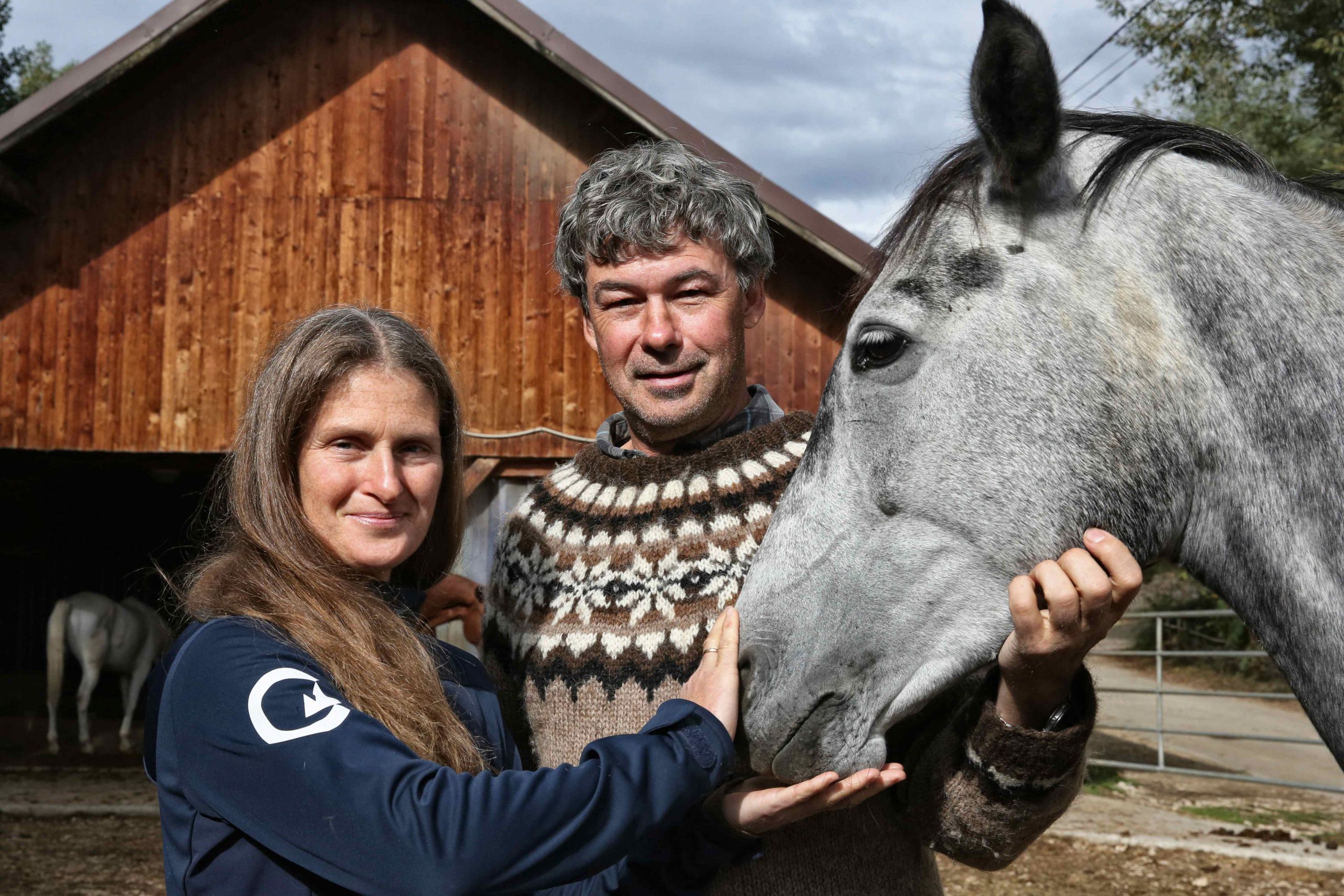
The wildlife biologists Christoph and Barbara Promberger buy up forests to protect them from illegal logging and poaching. Step by step, tree by tree, they want to make a dream come true: to create Europe’s largest forest national park.
The couple jointly run the Foundation Conservation Carpathia, which they founded in 2009 and where Simona Bordea and Mihai Zotta also work. They buy up forests to protect them from illegal logging and poaching. More than 250 square kilometres are under protection and are being reforested to date. The foundation’s rangers watch over another 300 square kilometres. A network of sponsors and patrons funds the project. Swiss entrepreneur Hansjörg Wyss is one of the donors, and supporters include companies like Jack Wolfskin and Prince Charles, an avowed fan of Romania, who has already dined with the Prombergers. The European Union also promotes the project. So far, they have come to an agreement with several hundred landowners and had countless talks with farmers and mayors. Step by step, tree by tree, they want to make a dream come true: to create Europe’s largest forest national park that includes the adjacent Făgăras and Leaota Mountains, a protected area of more than 250,000 hectares – ten times larger than the Bavarian Forest National Park in Christoph Promberger’s home country.
Barbara Promberger is responsible for wildlife management. She researches the behaviour of lynxes and bears. They frequently have to deal with “problem bears” that get too close to the villagers. In the maize fields next to the Promberger’s farm, the bears gorge themselves on the crop. The Prombergers once caught a brown bear mother and her cub ravaging a sow. However, incidents like that are rare. “We will then examine the bears’ fur and genetic make-up to trace whether they are animals we already know,” says Barbara Promberger. One of the bears, as they were able to find out this way, comes from the forest into the village once a year, eats its way through – and then disappears again. These are important findings that can help avoid conflicts between farmers, hunters and conservationists.
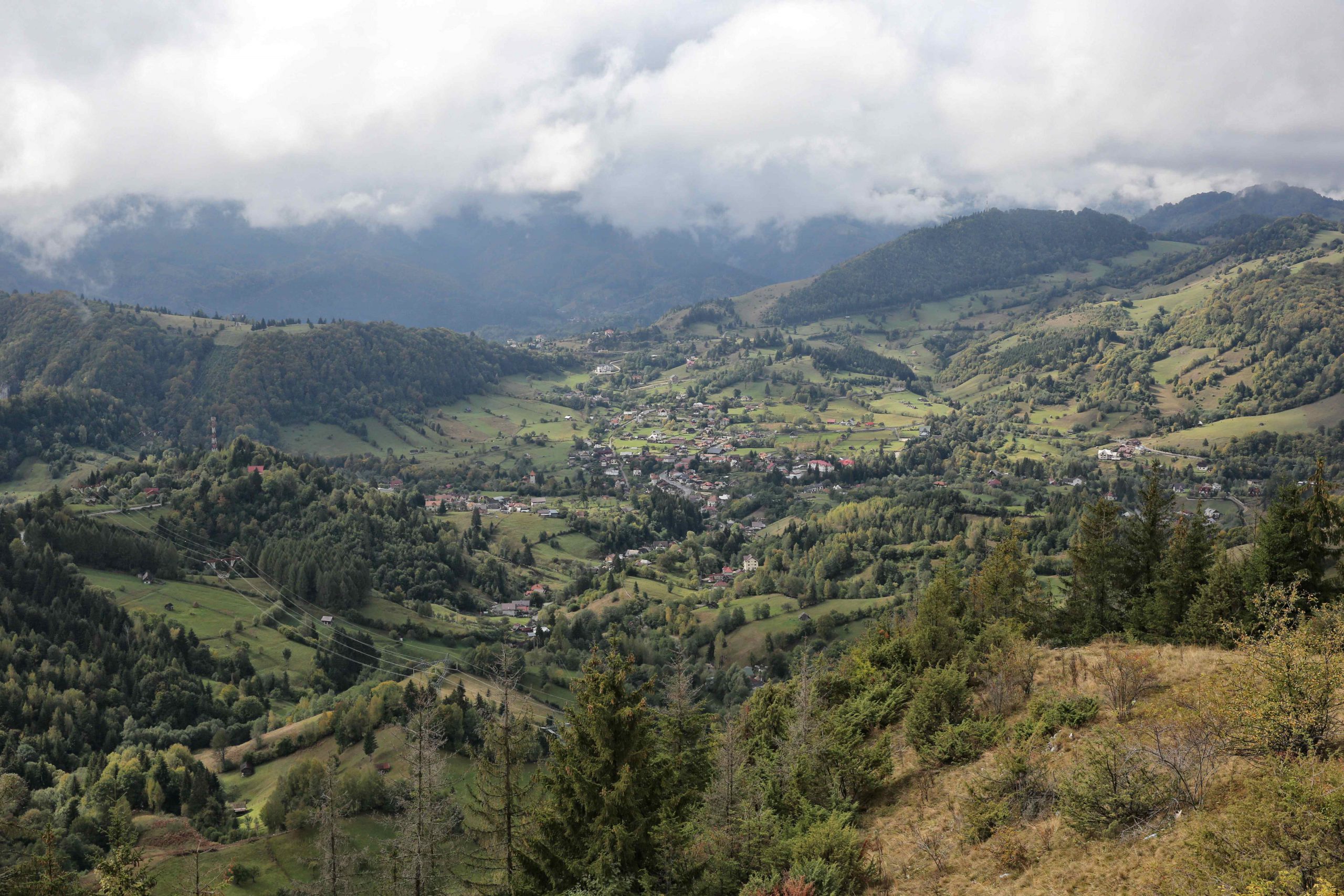
In the green hills of Transylvania lies the village of Cobor, a typical Transylvanian village. A place that seems deserted in parts – and at the same time full of life.
Not far from their horse farm lies the village of Cobor, an hour’s drive through the lush green hills of Transylvania. On an eco-farm with a horse boarding stable, foundation staff breed Hungarian steppe cattle, an old cattle breed boasting impressive horns. Carpathian shepherd dogs are barking next to the pasture. A bitch is lying in the kennel, her puppies suckling at her teats. The herding dogs are allocated to the shepherds free of charge to protect the flocks from wolves and bears. Cobor is a typical Transylvanian village, a place that seems deserted in parts – and at the same time full of life. Children play in the streets. Dogs dig in the ditch. Chickens peck at the road. Horse-drawn carriages pass through the village. All around, wandering shepherds cross the lush green valleys. Lean horses and speckled cows graze in the pastures. Green hills rise gently, meadows as far as the eye can see.
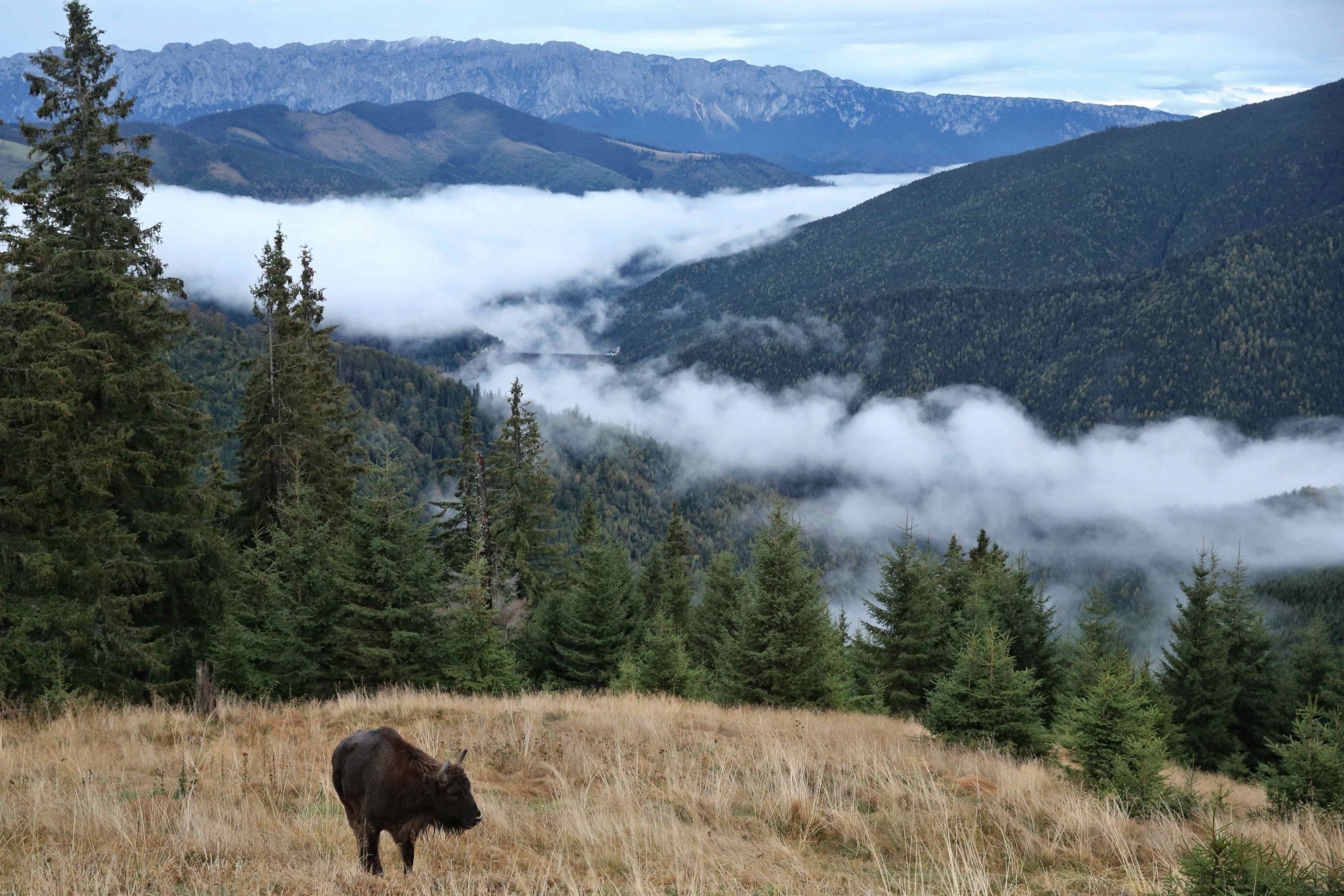
A wisent cow, a shaggy European bison in front of the cabin. The foundation started to release them back into the wild in 2020. Brought from wildlife reserves in Germany, Poland and Scandinavia, they are now given a new home in the forests.
A landscape so pristine that Simona Bordea can’t let go, not even on her many journeys all over the world. “My heart keeps me here,” says Bordea. She lived in the US for years and visited all its national parks. She looked into whether and how the concept of Yellowstone Park could be transferred to Romania. It is a dream for the future: to create a huge wilderness area in Romania in the coming years. “People who come here, learn more about the ecosystem and observe the animals will think differently about nature afterwards”, says Simona Bordea. In the early evening we reach the summit of Comisu, our camp for the next night. We have hardly arrived at the cabin when Simona Bordea raises her index finger to her lips and whispers softly. “Look, out there.” In front of the hut, a wisent cow, a shaggy European bison, has begun to graze. The foundation started to release them back into the wild in 2020. Brought from wildlife reserves in Germany, Poland and Scandinavia, they are now given a new home in the forests. Simona Bordea knows the cow: Damine roams the area alone, without a herd. She left it shortly after arriving, and is waiting to find other wisents. Damine looks over at the cabin. We wonder whether she sees the people looking at her spellbound with binoculars from behind the window. She lowers her head, continues to graze, unmoved – and disappears between the trees soon after.
Original in German. Translated into English by Barbara Maya.
This text is protected by copyright: © Isabel Stettin. If you are interested in republication, please contact the editorial team. Copyright information on pictures, graphics and videos are noted directly at the illustrations or on top of the article. Cover picture: Illustration: Sascha Montag